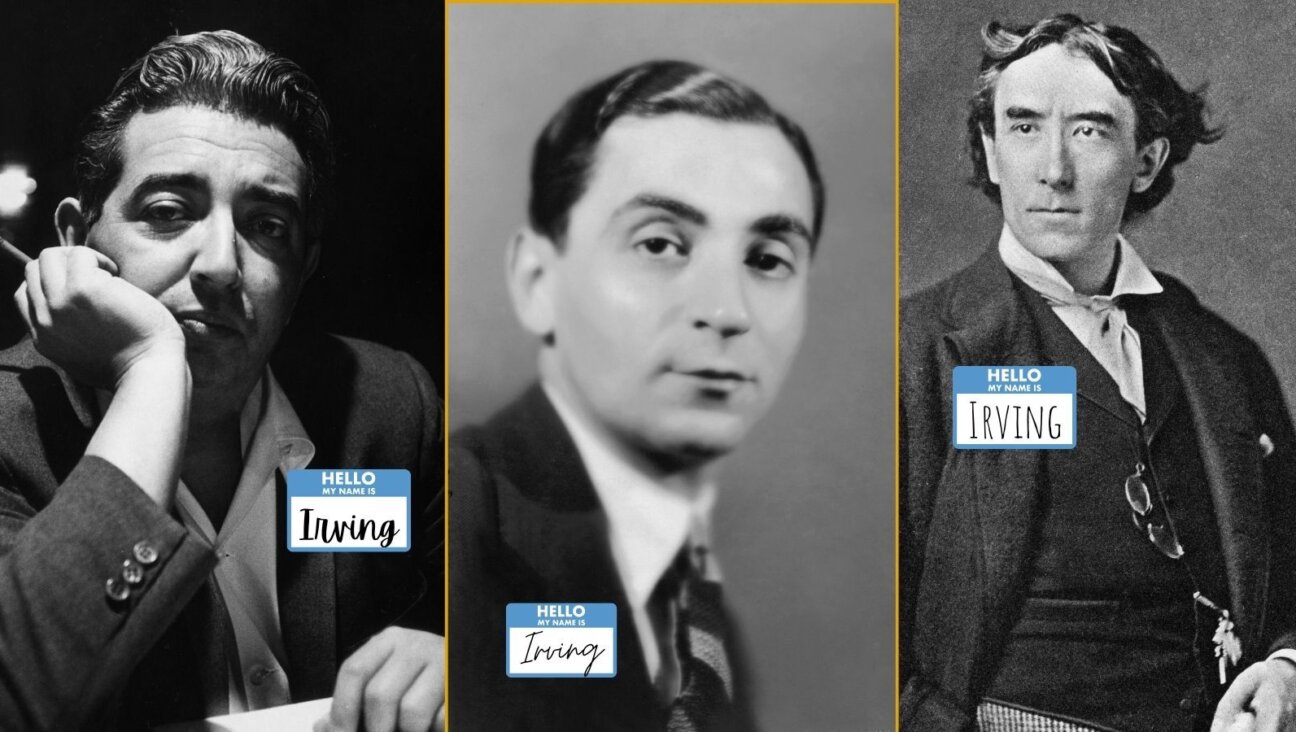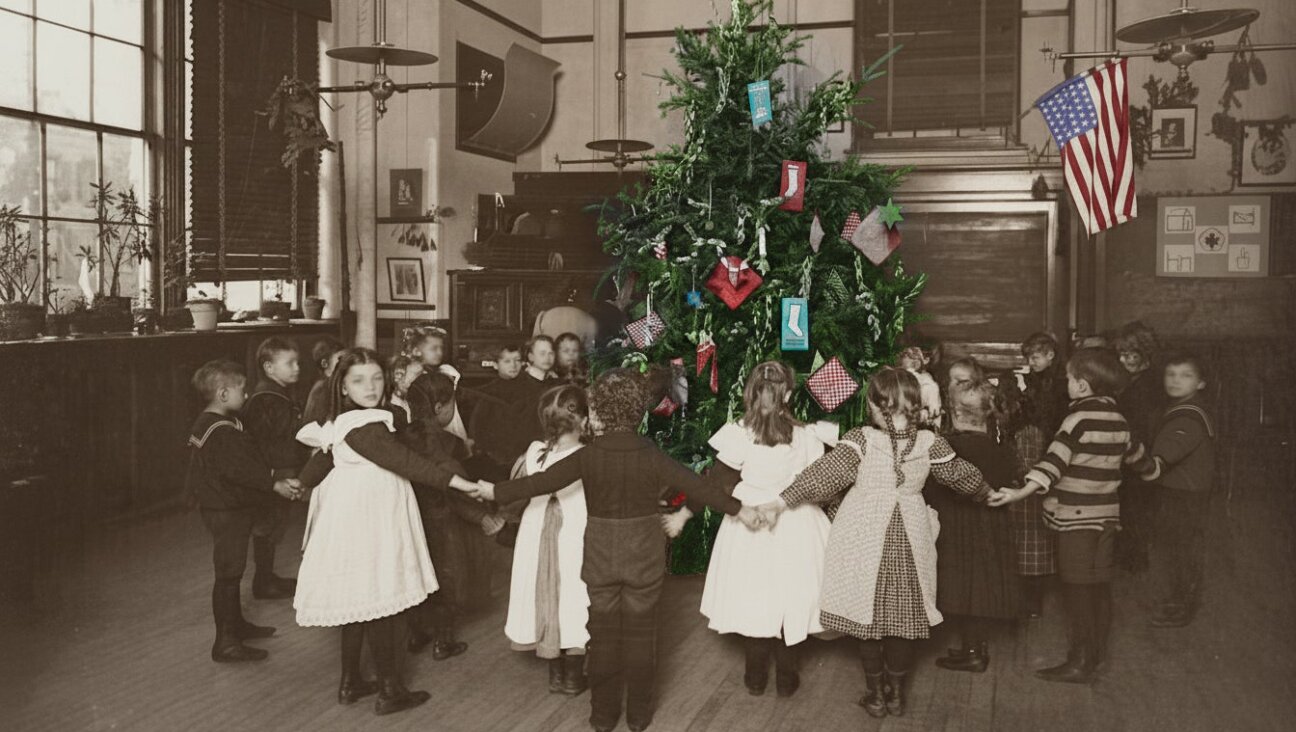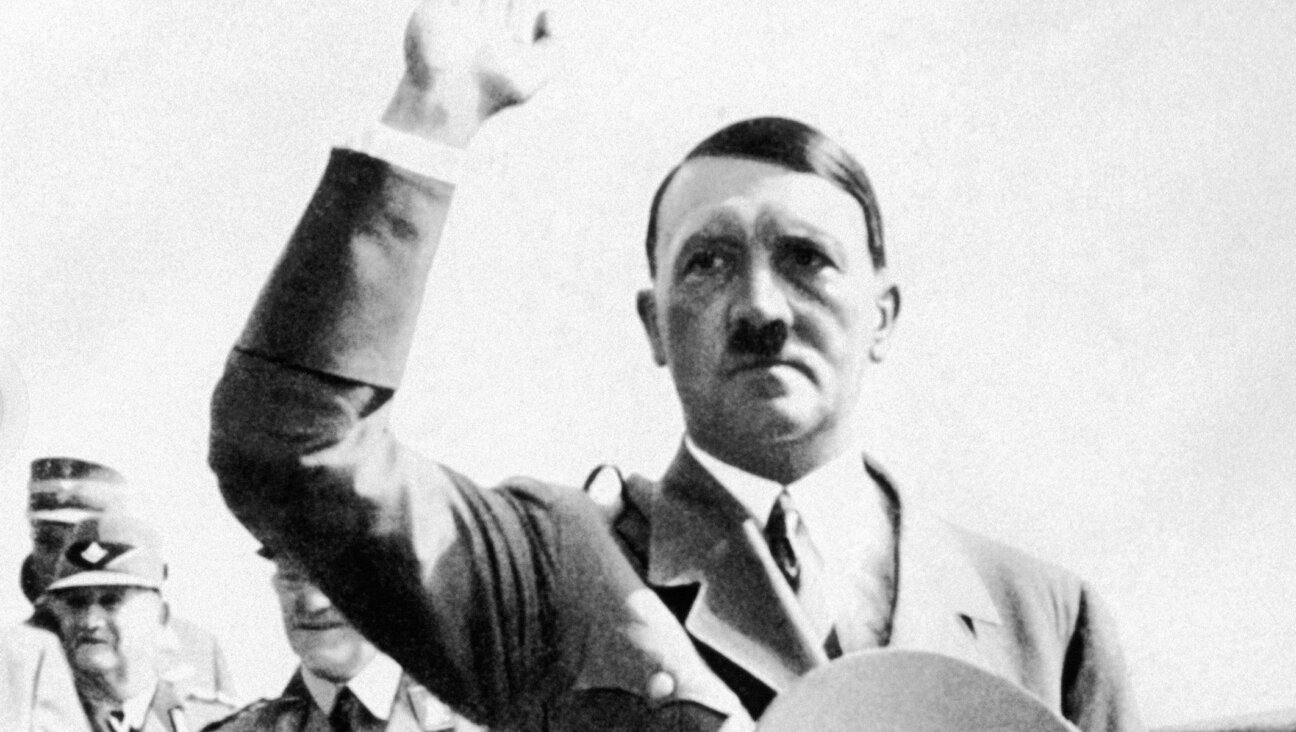Ex-Hasidic Writers Go Off the Path and Onto the Page

Graphic by Angelie Zaslavsky
When she was 17 years old, Leah Vincent, a young Orthodox woman from Pittsburgh, found herself living alone in a tiny basement apartment in Brooklyn. She was estranged from her parents and 10 siblings, socially isolated, and living on a low-wage diet of grilled cheese sandwiches and ketchup. Desperate for company, she sought the friendship of the men at the basketball court in her neighborhood, and eventually started dating a man she calls “Nicholas.” One night, when she went to visit him at a Manhattan club called Starlight, he raped her.
Over the next few years Vincent began cutting herself, attempted suicide, was hospitalized in a psychiatric ward, became a prostitute on Craigslist, had an affair with a married professor, and eventually, after much turmoil and self-doubt, graduated from Brooklyn College and earned a master’s degree in public policy from Harvard. Now happily married with a young daughter, she has written a memoir titled “Cut Me Loose: Sin and Salvation After My Ultra-Orthodox Girlhood,” which was published in January to general acclaim.
Vincent’s book is one of the latest additions to a growing list of ex-Orthodox memoirs. These include books by authors like Shalom Auslander and Deborah Feldman, whose latest effort, “Exodus,” was published in March; essays by writers like Judy Brown, Frimet Goldberger and Shulem Deen (who is the editor of Unpious, a website for the ex-Orthodox, and who is publishing his own book next year); and documentaries like “Leaving the Fold” and “Unorthodox,” which screened on May 4 at the Montclair Film Festival. There is even a podcast discussing the ups and downs of post-hasidic life called, tongue-in-cheek, “The After Life.” As stories go, this one is basically its own genre.
In fact, there are two kinds of ex-Orthodox — or “OTD”1 — stories we’ve been hearing a lot of lately. In 2006, journalist and sociologist Hella Winston documented the phenomenon of ex-hasidim in one of the first books on the subject, “Unchosen: The Hidden Lives of Hasidic Rebels.” Although Winston had set out to write her doctoral thesis on the lives of hasidic women, she discovered instead a surprisingly large number of people who were questioning or leaving their faith. At that time, they existed on the fringes of their communities, and lacked much visibility or organization. Today, the OTD community has come out from underground. It is responsible for events, organizations, and publications and has a lively presence on social media. When the Orthodox world holds rallies — like the 2012 Internet Asifa — the OTD world shows up to protest. This transformation, from a collection of scattered individuals to a broad social movement, is the OTD story writ large.
Then there is the second kind of ex-Orthodox story — the OTD story writ small. These are stories not about an activist community, but about ex-Orthodox people trying to find their own paths. After getting their start in the first decade of the millennium on blogs — the once-thriving OTD blogosphere, which included writers like Feldman and Deen, helped lay the groundwork for the community we see now — OTD memoirists have expanded into a broad array of media. Whereas in 2005 it took an outsider like Winston to tell the OTD story, OTD writers are now telling it themselves. And while the OTD community is a shared phenomenon, each OTD journey is personal, and usually painful.
•
If OTD stories proliferate because there are ex-Orthodox people with stories to tell, it is also because these are stories that people want to hear.2 Ex-Orthodox narratives are inherently dramatic. They start with hardship and disadvantage, continue through challenges to be overcome, and conclude with the author’s success in the secular world. They play to outsiders’ curiosity about the Orthodox world, to Jewish anxieties about a demographically resurgent Orthodoxy and to Orthodox feelings of vulnerability in regard to the larger culture. It’s easy to see why publishers are eager to issue such books, and why websites like that of the Forward experience an uptick in traffic when these stories are posted.
Like all writing, however, ex-Orthodox memoirs are not direct transmissions of experience, but a performance of that experience for the reader. No matter how unusual an author’s background, or how many difficulties she overcame, no writer is exempt from the demands of good writing. Like all memoirists, OTD authors must elicit the reader’s identification, yet stand apart to attract their interest. They must establish the value of their stories, while creating voices that are sympathetic and engaging. It’s one thing to have a story to tell — it’s another thing to be able to tell it.
That’s a thought worth keeping in mind when reading what seem like the bookends of the contemporary ex-Orthodox genre: Shalom Auslander’s “Foreskin’s Lament,” published in 2007, and Deborah Feldman’s “Exodus,” a sequel to her bestselling 2012 memoir, “Unorthodox.” These books provide a useful comparison in part because of chronology — Auslander helped kick off the current wave of memoirs, while Feldman’s is the latest example — but also because of their different approaches to writing.
Auslander, who has contributed radio pieces to programs like “This American Life,” possesses the most performed persona of any of these authors. He dramatizes his inner conflict through heightened episodes of self-castigation — an antagonistic relationship with a mean-spirited God features prominently in his work — and he uses a self-conscious comedic voice to achieve his effects. At times, it seems as though all of his writing is meant to be read aloud. Thus, for example, he describes his early Jewish education not as he would have experienced it at the time, but through the lens of belated ridicule:
The people of Monsey were terrified of God, and they taught me to be terrified of Him, too — they taught me about… a man named Moses, who escaped from Egypt, and who roamed through the desert for forty years in search of a Promised Land, and whom God killed just before he reached it — face-plant on the one-yard line — because Moses had sinned, once, forty years earlier. His crime? Hitting a rock.
Auslander deserves credit for recognizing the legitimacy of his experience as a literary subject, and other OTD writers cite him as an inspiration for the telling of their own stories. But Auslander’s facetious tone (“face-plant on the one-yard line”) undermines the value of his work. By refusing to play it straight with his own life, he makes its agonies seem frivolous.
If Auslander is overly conscious of his performance, Feldman seems completely unaware of the persona she creates. In her first book, she described her upbringing by her hasidic grandparents in the Satmar community of Brooklyn’s Williamsburg, followed by an unhappy arranged marriage and her departure from the hasidic community with her 3-year-old son. Although the book received criticism for alleged mistakes, omissions and outright fabrications, Feldman’s story is, on the whole, well told. Even Jewish readers, for whom Auslander’s Modern Orthodox Monsey upbringing might not have seemed particularly exotic, were likely to have their interest piqued by Feldman’s Satmar background.
“Exodus,” however, is another case entirely. Given the commercial achievement of “Unorthodox,” it’s not surprising that Feldman and her publisher would try to repeat that success. But Feldman has already told the story she had to tell. Unlike Auslander, who began by writing short stories and followed his memoir with a novel, Feldman hasn’t shown an ability to write about anything other than herself. And in “Exodus,” that amounts to a grab bag of travel and dating experiences, filtered through an oblivious self-importance. Thus, after wearing her learning on her sleeve throughout the book, referencing Baudrillard and Émile Durkheim and asserting her superior appreciation for poetry (thanks to the classes she took at Sarah Lawrence, which she mentions repeatedly), we get this:
I did not have daddy issues. That wasn’t why I was attracted to, or kept attracting, older men… I had not so much been hurt by my father as I had wrestled with his mental and physical absence… How to fathom the filling of my personal space with a male figure when none had featured in my original story?
It’s not just Feldman who should be embarrassed here, but also the editor and publisher who let her get away with this. Indeed, reading “Exodus” is like watching Feldman walk into traffic — you want to reach out and stop her, but you can’t. At least, now we know where to find a good description of what daddy issues are.
•
If OTD authors face the same difficulties as other writers, the challenges of memoir are also heightened by the nature of their stories. As with immigrant writers, or Jewish memoirists’ Christian and Muslim counterparts — the OTD genre is really an ecumenical phenomenon — the poles of sensationalism and sympathy align neatly with the events of their lives. The world they describe can be split between the exotic past and the mainstream present, religion and secularism, ignorance and knowledge, doubt and confidence, restriction and freedom. When it comes to the difference between the background they describe and the reader to whom they speak, their stories must traverse the distance between “other” and “us.” They need to capitalize on cultural difference, and overcome it at the same time.
For many OTD writers, it is the first part that proves most problematic. While they may succeed at drawing a convincing portrait of the Orthodox communities from which they came, they are also compelled to confirm outside expectations of extremism. Sometimes this is accomplished through factual details of behavior or practice — modesty requirements for women, for example, or ignorance of sexual realities — but just as often it is reinforced through cliché. Seemingly every OTD story uses stock descriptions to describe the Orthodox world like “insular,” “fervent,” “austere,” “rigid” and “close-knit.” The authors’ struggles with these communities are, subsequently, the acting out of “forbidden desires.” Like all clichés, such phrases aren’t incorrect, but they are assertions rather than explanations, and they play to predisposed attitudes rather than express original experience.
Yet these stories also create a more complex image of Orthodoxy than such descriptors would suggest. A built-in irony of the OTD story is that one of its major functions is to humanize the Orthodox world it rejects. This is necessary for narrative purposes — readers must be able to identify with the person the author was, and not just the person she became — but also for personal ones. While it may be possible to disavow your religion, your community, and even your family, it’s hard to completely disavow your own life, especially if you’re a memoirist. Something of those years must still have value, if only as nostalgia.
Thus, for example, in both of her books Feldman emphasizes the relationship she had with her grandmother, whose metamorphosis from prewar European lady to postwar Satmar matriarch she is at pains to uncover. Vincent, whose story is largely about the rejection she feels by her parents and family, also recalls happier days as a beloved daughter in a house full of siblings. Even religious practice sometimes comes in for positive treatment. In a 2011 essay for Sh’ma: A Journal of Jewish Ideas, Deen described a transcendent moment he experienced at age 13, at a gathering in the hasidic village of New Square:
Slowly, I was swept up in the fervor of the crowd, and when the tunes turned joyful, I joined the other Hasidim dancing in place, hand in hand, shoulder to shoulder, children and their fathers, yeshiva boys and the elderly, lifting their feet and stomping them on the floorboards. It occurred to me then, for the first time, that being a Hasid allowed for more than the daily grind of studying Talmud and adhering to the minutiae of our religious laws.
Deen goes on to describe how, despite finding an approximation of that experience years later at a Rainbow Gathering in the Allegheny National Forest, he could no longer lose himself the way he could at 13. Yet in this essay the power of Deen’s memory is palpable, both for the writer and the reader.
•
If such sympathies are necessary for ex-Orthodox memoir, they are indispensable to ex-Orthodox fiction. Though memoirs have been more prominent in recent years, tales of leaving Orthodoxy are hardly confined to autobiography. In fiction there is a wealth of antecedents for the OTD story, from Chaim Grade’s epic depiction of prewar Orthodoxy in “The Yeshiva” to Chaim Potok’s tales of mid-century hasidism in books like “The Chosen” and “My Name Is Asher Lev.” Contemporary authors who deal with Orthodox experience include Nathan Englander, who has set many of his stories in an imagined hasidic community in New York City; Tova Mirvis, whose novels span both the religious and secular Jewish worlds; and Anouk Markovits, who depicted a Satmar family from Paris in her 2012 novel, “I Am Forbidden.”
Indeed, the Orthodox world offers rich material for fiction writers. It supplies small communities where status and hierarchy are prized, taboos and social norms are strictly enforced, and rebellion is serious business. The large size of Orthodox families provides an environment bursting with character and conflict possibilities. Thanks to low standards of secular education and lifelong religious indoctrination, it creates a series of built-in obstacles for characters to overcome.
At the same time, the need for sympathetic identification with Orthodox life is greater in fiction than it is in memoir. Whereas memoirs implicitly assume the perspective of the post-Orthodox author, fiction immerses the reader more immediately in the here-and-now of its characters. By bringing the realities of religious life within close view, these books show the individuality of Orthodox Jews as much as their group characteristics or exotic otherness.
Consider, for example, “The Romance Reader” (1996) by Pearl Abraham, and “Hush” (2010) by Eishes Chayil (who now goes by her real name, Judy Brown). These books seem to have much in common. Both are coming-of-age stories featuring young female protagonists from hasidic families. Both depict innocent childhood delights like sharing secrets and sneaking candy with siblings, while also examining more disturbing aspects of Orthodox life, like the fetishization of the Holocaust, the demonization of non-Jews, and the absolute separation of gender roles. By the end of these books, both Gittel, in “Hush,” and Rachel, in “The Romance Reader,” come to question their communities as they struggle with the difficulties of arranged marriages.
Yet the worlds and characters of these novels are strongly distinct. While “The Romance Reader” is set in a sparsely populated area of upstate New York, where Rachel’s father runs his own synagogue and aspires to lead his own sect, “Hush” takes place in Borough Park, an epicenter of American hasidism. While Rachel’s parents fight over their conflicting goals — her mother would rather live in an established community and is frustrated by her husband’s inability to earn a living — Gittel’s non-rabbinic parents are an example of love and marital stability. Most important, while Gittel ultimately manages to find happiness in her marriage and accommodation with her community, Rachel decides that she must leave both behind. Such divergent representations paint Orthodoxy not as a one-dimensional model of religious fundamentalism, but as a nuanced setting for a variety of characters and stories.
•
Just as the orthodoxies described by these authors are different from one another, so too are the paths away from them. For some writers, the decision to leave religion was the result of a purely intellectual journey, with one question leading to another until the edifice of Orthodox dogma collapsed. More troubling stories include experiences of physical, sexual and emotional abuse. In 2007’s “The Rabbi’s Daughter,” Reva Mann goes from growing up as the rebellious daughter of a prominent Modern Orthodox British rabbi to living in an ultra-Orthodox community in Jerusalem to following her own self-defined Jewish path. Many of these books reflect women’s experiences, and several come to a head when the protagonist must extricate herself from an arranged marriage.
But whatever their differences, nearly every OTD story involves, at some point, a visit to the public library. (It makes sense, after all, that people who grew up to be writers would also have been keen readers.) In “Unorthodox,” Feldman begins her chapters with quotes from books like “A Tree Grows in Brooklyn,” “Pride and Prejudice” and Abraham’s “The Romance Reader,” whose very title refers to Rachel’s habit of reading forbidden novels. Vincent relates how she read her way through a college book list before she ever dared sign up for classes. In Markovitz’s “I Am Forbidden,” one of the main characters visits Paris’s Bibliothequé Saint-Genviève, which she experiences as a magical place where “everyone was equally chosen.” Though the public library may seem banal to most of us, for these authors it was a portal to another world.3
These days, the library is not the only resource for information-starved hasidim. It’s the Internet, by way of smart phones, that’s most likely to puncture the information bubble imposed by community leaders. Still, the experience is largely the same. In an essay for Salon, Deen described how his first exposure to talk radio led to newspapers, TV, library books and eventually the Internet. In an article for the Forward, Judy Brown wrote how a friend’s daughter realized that Jews weren’t the only victims of genocide after researching the Holocaust online, a fact that shook her confidence in the blinkered history she had been taught. After an upbringing deprived of outside knowledge, any exposure can dismantle an entire worldview.
Such descriptions of enforced ignorance serve as trenchant criticism of ultra-Orthodoxy. Yet themes of learning and discovery serve a narrative purpose, as well. One of the paradoxes of memoir is that the author cannot just wallow in the past — she must progress from it. No OTD writer is going to sell books just by protesting the injustices of the Orthodox world; whatever difficulties she suffered, she must overcome them. An enlightenment narrative is thus a way to give these stories an upward trajectory — to illustrate the transformation of the struggling character into the confident author. As with many accounts of childhood hardship, the culmination of the memoir is the memoir itself. Telling the story is the triumph.
•
Not surprisingly, the implication that leaving Orthodoxy is a triumph has brought these books under attack, not just from the ultra-Orthodox, but from more culturally integrated Orthodox Jews as well. Such critics point out that not all Orthodoxy is tyrannical and repressive, that it can have spiritual and intellectual value, and that there are moderate paths in addition to extreme ones. Elad Nehorai, a blogger who goes by the moniker “Pop Chassid,” writes that Orthodox Jews “feel like the stories have been taken out of context, that they’re painted to make all orthodox Jews look bad, that the world is only interested in affirming its own beliefs.” On the Forward’s The Sisterhood blog, Gavriella Lerner acknowledged that “Orthodox life is not for everybody” but argued that others should “respect those of us who find beauty and meaning in our rituals and way of life.” There is truth to this criticism — nobody wants her lifestyle to be cast as the benighted fundamentalism at the beginning of someone else’s life story.
But the backlash against OTD memoirs fails to grapple fully with the OTD experience. The journey away from Orthodoxy is not just a matter of “how?” or “why?” but most of all, “what was it like?” This is the most difficult thing for any writer to convey, especially to a reader who assumes non-Orthodox life to be the most desirable outcome. In fact, the OTD journey is painful largely because this outcome is not desirable. There are the internalized beliefs about God, and the anxiety that abandoning Judaism will lead to suffering in this life and the one to come (Auslander is particularly emphatic on this point). A person leaving Orthodoxy has to reconsider who she is as a person, and who she will become. Figuring out secular standards of dress, speech and cultural reference can also be formidable obstacles. And if rewriting your assumptions about yourself and the world is an intense experience in the best of circumstances, most people who leave Orthodoxy aren’t in the best of circumstances.
In fact, for many of them, the costs of breaking away extend far beyond faith or self-conception. Leaving your community can endanger your ability to earn a living, and can have devastating consequences on the family members left behind. Deen has written movingly about the dissolution of his marriage and, in a heartbreaking piece for Tablet Magazine, about the difficulty of maintaining a relationship with his children. (After reading that essay, acknowledging that “Orthodoxy isn’t for everyone” is cold comfort indeed.) With so much at stake, the most desirable thing is to convince oneself that Orthodox life really is best, whatever its costs. For those who do leave, it is only because the psychological anguish of living a lie leaves no other option.
Of all the ex-Orthodox memoirists thus far, it is Vincent who best portrays the lingering doubt that lies at the heart of the OTD experience. Unlike Auslander, who feels compelled to dress up his prose in comfortless humor, or Feldman, who is simply boring, Vincent achieves a sober voice that invites the reader’s sympathy without begging for it. Although her prose could stand to lose a few of its adjectives, her persona is both serious and sincere.4
Vincent’s book is also the best illustration of the vast grey area that exists between being on and off the derech. She describes how a few minor transgressions, like exchanging letters with a boy and buying a sweater that was too tight, caused her family to push her away, rather than pull her back in. Yet even after being rejected by her family, she still dressed in modest clothes and kept the laws of Shabbos and kashrus. Rather than abandon Orthodoxy entirely, she told herself at first that she would simply become Modern Orthodox. At one point she almost married a man who had also gone off the derech, but had repented and was once again devout. Such stories belie the idea that OTD authors are simply bitter people seeking revenge on the communities they left. Rather, they show the ways in which they tried to avoid leaving at all.
In addition to underestimating the ambivalence of the OTD experience, critics of these memoirs also fail to acknowledge the continuity of OTD engagement. In fact, not all “OTD” writers consider themselves non-Orthodox, even after personal transformations. In articles and blog posts for the Forward, Frimet Goldberger has described her journey from a Satmar upbringing in Kiryas Joel toward a more liberal Orthodoxy in Airmont, New York. In a case that lit up OTD social media a few months ago, a self-described Satmar hasid wrote about his embrace of modern biblical criticism, while continuing to live a committed hasidic life. Many OTD writers engage with Jewish life through the OTD community itself, and through involvement with organizations like Footsteps, which supports people going through similar experiences. Such cases illustrate an expanding realm of self-definition beyond the ultra-Orthodox/ex-Orthodox binary that has dominated the discussion until now.
Perhaps most importantly, it’s worth recalling — and OTD writers urge us to recall — that the journey hasn’t ended in triumph for everybody. There are those who feel compelled to stay in repressive Orthodox communities because their livelihoods or the wellbeing of their families depend on it, or because it is simply too difficult to leave the only world they know. There are those who have left, only to succumb to addiction or mental illness. There are people like Deb Tambor, who reportedly committed suicide last September after being denied custody of her children. The people who are able to write and publish memoirs are only a tiny part of the larger OTD drama.
Yet these memoirs give us insight into a phenomenon that is increasingly vital. As a publishing trend, the OTD story is probably nearing the end of its course, at least when it comes to mass-market memoirs. Yet the larger OTD phenomenon can only keep growing. As the Orthodox community expands, and as parts of it become increasingly extreme, there will inevitably be more and more people peeling off at its edges. Their impact on the rest of the Jewish community is palpable now, and in sufficient numbers it could be transformative. Already, the once-marginalized OTD population has achieved the organization necessary to make the rest of the world listen, and to have its voices heard. It certainly doesn’t hurt that they have such stories to tell.
Footnotes
- The term “OTD,” short for “off the derech,” or “off the path,” is controversial among ex-Orthodox individuals, since it is the term used by the Orthodox community itself and implies an inherent waywardness from normative values. At the same time, many ex-Orthodox people have embraced the term and it is widely used in the ex-Orthodox community. For the purposes of convenience, and with the liberty I grant myself as an OTD person — who says, after all, that sticking to the “path” is the superior choice? — I have chosen to use it. [^Back]10
- At one time I, too, thought I had an interesting story to tell. At age 11 I became religious and, five years later, after graduating high school at 16, I left home for an ultra-Orthodox yeshiva in Baltimore. Three-and-a-half years down the road, thoroughly disillusioned with Orthodox Judaism, I left. I may yet write a memoir one day, but in comparison with the hardships suffered by other OTD writers, my life story isn’t all that interesting. [^Back]11
- It’s no wonder that the OTD community protested when the Monroe Free Library amended its charter in late 2013 to exclude residents of the nearby Satmar village of Kiryas Joel. The library’s board of trustees may have been correct to point out that Kiryas Joel contributed no taxes toward the Ramapo-Catskill Library System, but they may not have realized the indispensable role the library served for a generation of wayward hasidim. [^Back]12
- One of Vincent’s few missteps, but also her most irritating, is her insistence on describing her former community as “The Yeshivish,” thereby turning an adjective into a capitalized noun and asserting the unity of non-hasidic ultra-Orthodox Jews, despite their lack of centralized authority or institutions. Here, regardless of the semantic innovation, Vincent also trades in cliché, since it is easier to slot her community into the hasidic sect-based model familiar to readers of other ex-Orthodox memoirs than it is to deal with the vagaries of denominational hair-splitting. [^Back]13
Ezra Glinter is the deputy arts editor of the Forward. Contact him at [email protected] and follow him on Twitter @EzraG

















